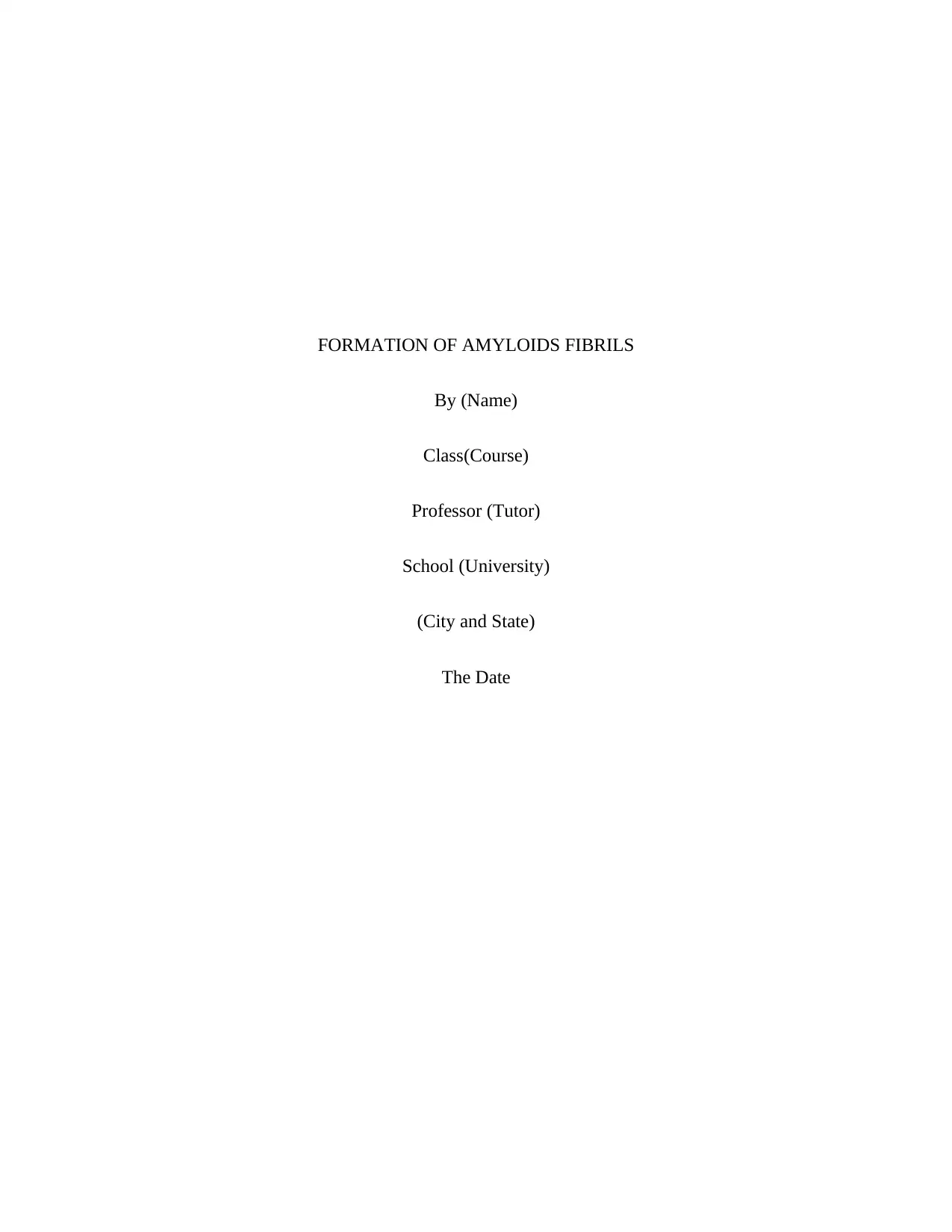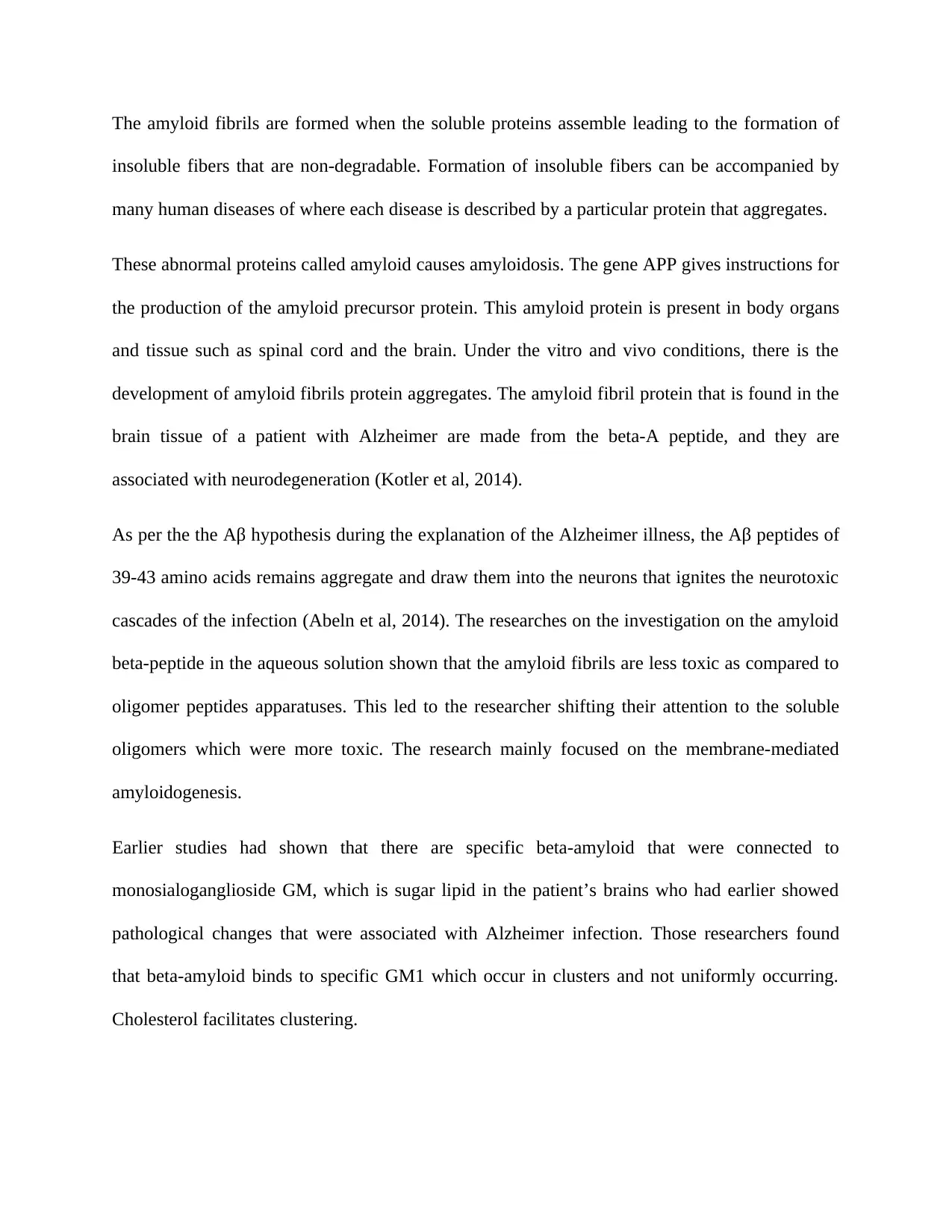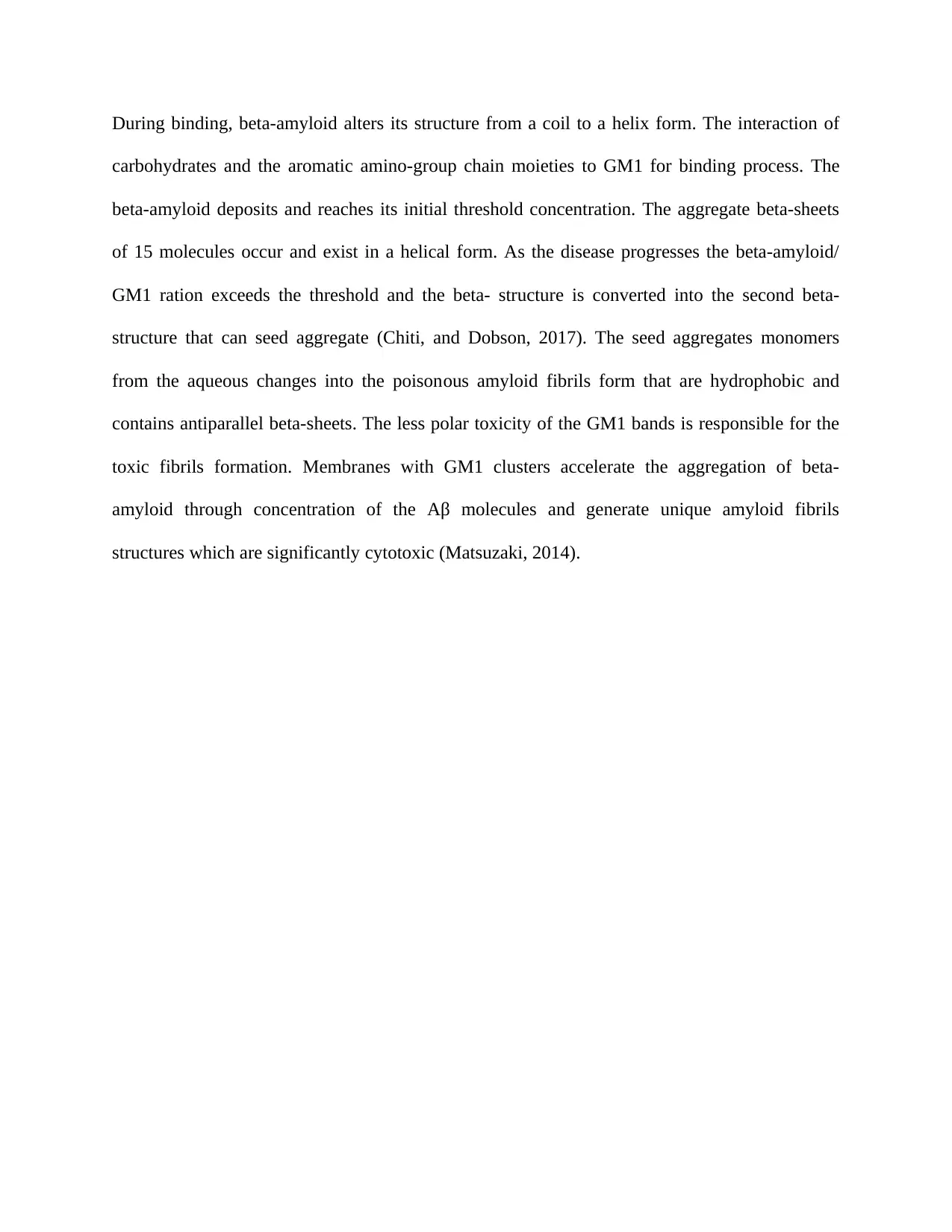University Biology Report: Formation of Amyloid Fibrils and Disease
VerifiedAdded on 2021/12/08
|4
|659
|67
Report
AI Summary
This report explores the formation of amyloid fibrils, insoluble fibers formed from the aggregation of soluble proteins. It highlights the link between amyloid fibrils and various human diseases, with a focus on Alzheimer's disease. The report discusses the role of the amyloid precursor protein (APP) and the formation of beta-amyloid peptides in the brain tissue of Alzheimer's patients. It examines the Aβ hypothesis, membrane-mediated amyloidogenesis, and the interaction between beta-amyloid and monosialoganglioside GM1, particularly the role of GM1 clusters and cholesterol in facilitating aggregation. The report also covers the conversion of beta-sheets into a second beta-structure, the formation of toxic amyloid fibrils, and the cytotoxic effects of GM1 clusters. The research emphasizes the importance of understanding these processes to address neurodegenerative diseases.
1 out of 4











![[object Object]](/_next/static/media/star-bottom.7253800d.svg)